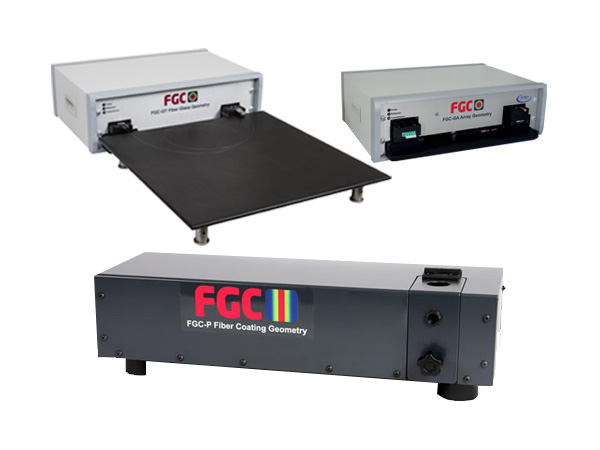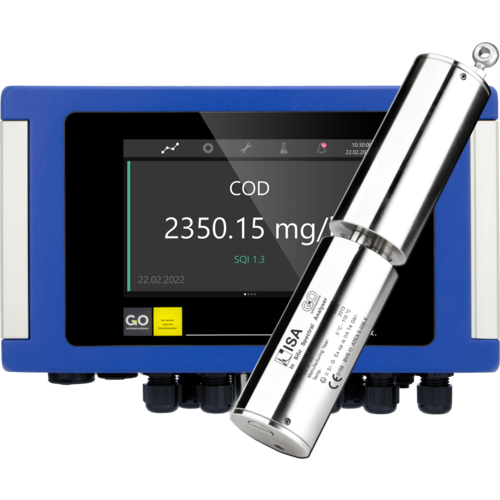Maximize Your Fiber Optic Performance: Recognizing Optical Fiber Diameter Analyser Modern Technology
The performance of fiber optic systems is critically affected by the precision of their diameter, a factor commonly forgot in the pursuit of ideal signal stability. Recognizing the technology behind optical fibre diameter analysers discloses the elaborate equilibrium between measurement precision and manufacturing high quality. These gadgets not only enhance conformity with industry criteria but likewise offer real-time understandings that can preemptively deal with possible problems. However, the effects of their usage expand beyond simple dimension; they can essentially change the landscape of fibre optic effectiveness. What aspects should one think about to harness their full possibility?
Importance of Optical Fiber Diameter
The diameter of optical fiber plays an important function in figuring out the performance and efficiency of interaction systems. It affects a number of crucial criteria, including the setting of light breeding, attenuation, and bandwidth ability. Bigger diameters normally enable numerous light settings, assisting in higher information transmission rates. Conversely, smaller sized diameters have a tendency to sustain less settings, which can improve signal clearness and minimize crosstalk.

In addition, understanding the size's implications can lead to cost savings by lowering the need for signal boosting and repeaters in comprehensive networks (optical fibre diameter analyser). In conclusion, the importance of optical fibre size can not be overemphasized, as it directly affects the overall efficiency and reliability of modern-day communication systems

How Diameter Affects Signal Quality
Signal top quality in optical fibre systems hinges significantly on the diameter of the fibre. The size influences several crucial parameters, consisting of depletion, transmission capacity, and modal dispersion. A smaller sized diameter can cause greater depletion prices, leading to signal loss as light journeys with the fiber. This depletion can endanger the honesty of the transmitted data, bring about a decrease in signal high quality, specifically over fars away.
On the other hand, bigger diameters typically permit for improved light capture and lowered modal dispersion, enhancing signal quality. In multimode fibres, a bigger core size can support numerous light settings, yet it may also introduce intermodal diffusion, which can degrade signal high quality. Therefore, selecting the optimum fibre diameter is vital for attaining the desired efficiency in specific applications.
Furthermore, the communication in between the fibre diameter and the wavelength of the light used plays an important function in figuring out the efficient transmission distance and total signal stability. Recognizing exactly how fibre diameter influences signal top quality is necessary for network developers and engineers making every effort to enhance optical fiber systems for reputable, high-speed data transmission.
Review of Size Analyser Innovation
In many optical fiber production processes, accurate dimension of fiber diameter is important for ensuring consistent efficiency and quality (optical fibre diameter analyser). Diameter analysers are advanced instruments made to examine the physical measurements of optical fibres with high precision. They use advanced optical and laser innovations to determine the size, ovality, and concentricity of the fiber, thus offering essential data for high quality control
These analysers can operate in-line during the production procedure or as part of off-line screening protocols. In-line systems enable real-time surveillance, allowing suppliers to adjust specifications promptly, thus preserving ideal manufacturing conditions. Off-line analysers, on the various other hand, supply extensive assessments of sets, making sure that any type of variances from specified resistances are determined and resolved.
Diameter analysers considerably add to the decrease of issues in optical fibres, enhancing you could try these out overall item reliability. By constantly gauging key parameters, these technologies facilitate compliance with industry standards and specs. As the need for high-performance optical fibers proceeds to increase, the role of size analysers comes to be significantly important in accomplishing the desired top quality and performance requirements in fibre optic systems.
Key Features of Fibre Size Analysers
Although various versions of fiber size analysers exist, they frequently share several vital functions that boost their functionality and reliability. Among the most substantial features is high-resolution dimension abilities, which ensure precise size analyses, important for preserving quality assurance in fibre manufacturing. In addition, several analysers include sophisticated optical sensors made to find minute variations in fiber diameter, thus offering indispensable information for process optimization.
Another crucial feature is real-time tracking, allowing drivers to get prompt feedback on fiber size throughout the production procedure (optical fibre diameter analyser). This capacity helps with rapid changes and minimizes the likelihood of issues. Many analysers also come outfitted with straightforward user interfaces, allowing drivers to quickly browse through settings and data outcomes
In addition, robust data storage and analysis performances are vital for tracking historic performance trends and making certain conformity with industry requirements. Some designs also offer connection alternatives for combination into existing production control systems, enhancing overall functional effectiveness. Lastly, compact and mobile styles permit for adaptable deployment within production environments, ensuring that top quality guarantee processes are seamless and effective. These attributes collectively add to the efficiency of fiber diameter analysers in enhancing fibre optic efficiency.
Ideal Practices for Fibre Optimization

First, regular calibration of optical fiber diameter analysers is necessary. This ensures accurate measurements and minimizes potential inconsistencies that could affect performance. Next, keeping a tidy functioning atmosphere is essential; dust and impurities can cause signify degradation.
Furthermore, it is essential to select fibres that fulfill specific application requirements. This includes assessing elements such as attenuation, bandwidth, and environmental conditions. Appropriate installment strategies need to additionally be complied with, including preventing sharp bends and extreme tension, which can jeopardize fiber stability.
Furthermore, employing advanced monitoring systems can facilitate real-time performance analyses, making it possible for prompt identification of concerns. Regular screening and upkeep must be conducted to guarantee that fibres continue to be within optimum functional criteria.
Finally, training personnel on the you can try here most up to date fiber optimization modern technologies and techniques will certainly improve their capability to apply reliable methods. By complying with these best techniques, organizations can significantly boost the efficiency and life-span of their optical fiber systems, guaranteeing efficient communication and information transfer.
Final Thought
Finally, the assimilation of optical fiber size analyser innovation is crucial for taking full advantage of fibre optic efficiency. By guaranteeing accurate measurements of fiber dimensions, these analysers significantly boost signal top quality and decrease losses during information transmission. Routine calibration and maintenance of the analysers are imperative to maintain optimal efficiency and conformity with sector standards. Inevitably, the application of this technology assists in improved information transmission rates and strengthens signal honesty, adding to the overall effectiveness of fiber optic systems.
Signal high quality in optical fibre systems pivots dramatically on the size of the fiber.In lots of optical fiber production processes, precise measurement of fibre size is vital for making certain consistent efficiency and quality. As the need for high-performance optical fibres continues to climb, the function of size analysers becomes significantly essential in achieving the wanted quality and performance requirements in fiber optic systems.
These attributes jointly contribute to the efficiency of fibre size analysers in optimizing fiber optic performance.
In verdict, the combination of optical fibre size analyser technology is important for making the most of fiber optic efficiency.